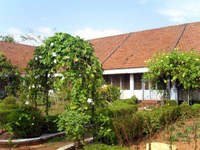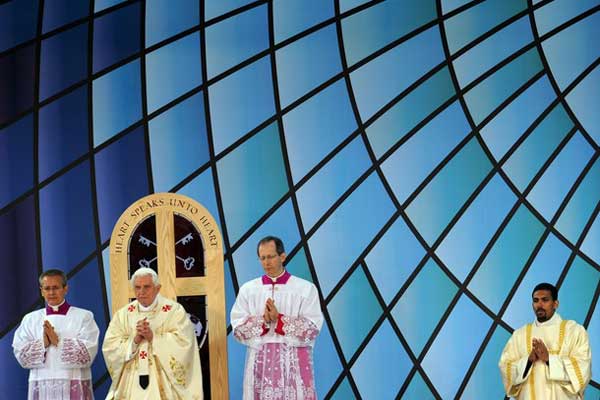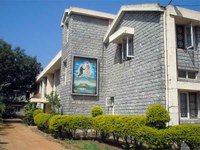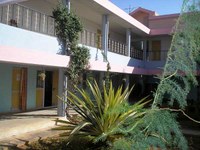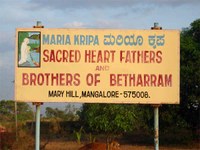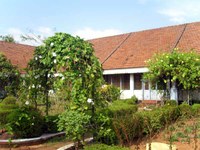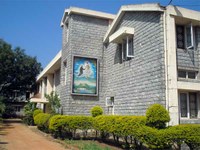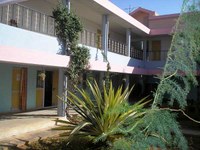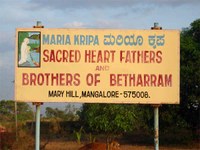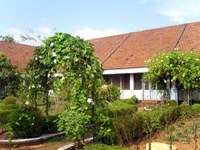Family News - 2010 October 14th
Contents
- A word from the Superior general
- Father Etchecopar wrote...
- Betharram: Our Lady of the Calvary (2)
- The joy of the Servant
- Solidarity Project: India 2010
- Chapter of the Fr Etchecopar Region: an experience of the Holy Spirit
- Beatification of Cardinal Newman: an unforgettable event
- 5 minutes with the Miracoli prayer group
- Betharram experience in China (9)
| format PDF |
A word from the Superior general

The twofold law of love and obedience
God, from whom proceeds all that is good, is asking for instruments stripped of everything especially of themselves, totally abandoned in their heart to the action of the Holy Spirit, to the law of love and charity which he is wont to inscribe there in, and to the great law of obedience, at the example of Our Lord, under these two points: The Spirit of the Lord is upon me because he has anointed me (Luke 4,18); he humbled himself and became obedient unto death even death on the Cross, which can be summed up in this expression Here I am! (DS 45).
If the style seems juridical, the language used by St Michael Garicoits expresses in reality the life style of the religious of the Sacred Heart, which is composed of consistency between the interior dimension the heart where the Spirit instils love which is the driving force of everything; and the exterior dimension, imitation of Jesus, the Beloved Son, obedient in everything to his Father, and seeking to please him in all things.
The dynamism of t he Incarnation supposes renouncing rank, taking risks with ones life rather than protecting it, so as to be able to save it. It is the dynamism of the grain of seed which has fallen into good soil and dies so as to bear fruit ; it is the dynamism of the Good Samaritan who goes up to the wounded man by the road side, to comfort him and ease his pain; it is the dynamism of Jesus bowing before his friends and kneeling down to wash their feet; it is the dynamism of Gethsemani and of the cross where Jesus accepts the failure of his personal projects so that his Fathers project of salvation may be realised; it is the dynamism of Easter and the Eucharist of broken bread, of blessed wine, of the body given up and the blood poured out.
Love is the inner strength, the secret spring which drives men and women to give their life, like Jesus, so as to bear much fruit, a fruit which lasts in an abundance of life for their brothers. Love can be expressed in a multitude of ways, like the human situations in which it is shown: services, commitments, self sacrifice, obedience, respect, compassion these are the works of mercy.
In charity Paul sees the interior strength and the works where it can be manifest, and which can come from motives other than love. If I have all the eloquence of men and of angels, but speak without love, I am simply a gong booming or a cymbal clashing. If I have the gift of prophecy, understanding all the mysteries there are, and knowing everything, and if I have faith in all fullness to move mountains, but without love, then I am nothing at all. If I give away all I possess, piece by piece, and if I even let them take my body to burn it, but am without love, it will do me no good whatever. Love is always patient and kind; it is never jealous; love is never boastful nor conceited; it is never rude or selfish; it does not take offence and is not resentful. (1 Cor. 13,1-7)
Obedience, which is characteristic of the Priests of the Sacred Heart, is an external dimension of love, a method of action which manifests it. Without love, obedience is nothing more than childish immaturity. If I obey and keep all the rules, but have no love, then I am nothing. Since the Father of all goodness loved me by giving up his beloved Son, who gave up his life so I might have a better life, in imitation of my brother and Master Jesus, I abandon to him all that I have and all that I am. Take, Lord, all my liberty, my memory, my will and my understanding. All that am and all that I have, it is you who gave them to me. To you I give them back without reservation. Dispose of them according to your will. Give me only your love and your grace. With these I shall be rich and desire nothing more. (St Ignatius of Loyola).
One has only to live without personal projects. By my vow of obedience I am always ready to collaborate in the projects of the Congregation to have part in the mission of the Church. It sometimes happens that I am tempted to usurp the project entrusted to me by the Congregation, because without realising it, I have become attached to it, I have lost my freedom and I am in conflict with it and with myself although I had freely offered myself to it. The Congregation, which had been depending on my obedience and my availability, cannot fulfil the commitment taken in favour of the Church. The mission is reduced to my last appointment where I feel fine and which I refuse to leave. In my life things are upside down; I had taken a commitment to live for Jesus and the Kingdom, and now everything is focused on my person.
Just like any external work of self renunciation and devotion to God and to others, obedience is founded on external means which free me from a disincarnate love, allow me to give concrete expression to my offering and protect me from misleading illusions. These exterior means are the Rule of Life, the community project lived in all simplicity - Fr Etchecopar speaks of community life poor, humble, crucified and expressed in the Rule and the voice of our Superiors who are the guarantors of the fidelity to the commitments of the Congregation to the local Churches, the projects of the Congregation and the possibility of each one to be of service in the different sectors where the life and mission of the Congregation are evident and are part of the life and mission of the Church.
Love and obedience are only possible if one accepts to be lost and to die, like the grain of seed, like Jesus, because there is total trust in God, the good and faithful Father, who always keeps his promises even to raising the dead to life. This is confirmed by the resurrection of Jesus of Nazareth, the crucified Messiah.
Gaspar Fernandez,SCJ
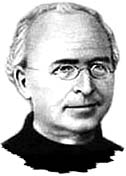 Father Auguste Etchecopar wrote...
Father Auguste Etchecopar wrote...
to his brother Maxime, 19th december 1886
Last October I had a stopover in Saint Palais. I hadnt been there for some time. My visit lasted a day and two nights. Twice, at night fall, Madeleine and I went to the cemetery to pray at our parents graves and those of our former masters at the College; Afterwards, on my own with the lay brother who accompanied me, I went near the College, on the side of the plane trees; there they stood at the entrance and brought back so many memories to me. I would have dearly loved to visit the chapel where in 1841 I had the joy of making my First Communion; I didnt dare go in. I reality I ought to have called the Primary School teacher who lives at t he college with his wife; I wanted to go unnoticed!
There, my dear brother, is all that remains of those early years which still are, and always will be the charm of our souls; they will be like a harbour in the storms of life, especially for us, whose days spent at the house and the College, were marked by the hand of God and the tenderness of his love.
Otherwise, everything is passing and time is carrying us towards our eternity. God be lessed for such passages which are a comfort for us, to better advance on our route and sing ever joyfully at the thought of so many graces. My soul glorifies the Lord!
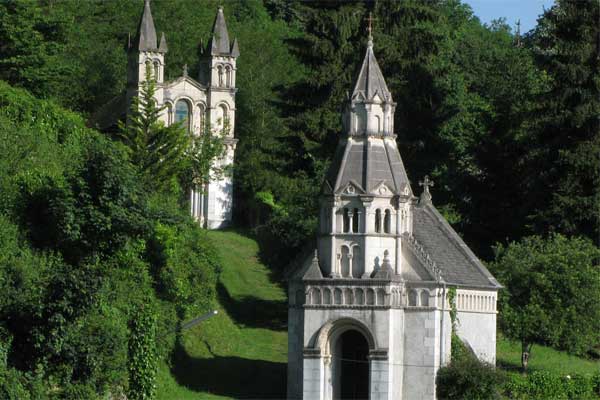
Betharram: Our Lady of Calvary (2)
Continuation and last part of the historical study by Fr.Beñat Oyhenart,SCJ on the way of the cross of Betharram.
The fury of the Revolution passed that way: on 17th March 1794, Citizen Monestier, Roberpierres delegate and his men tried to demolish Betharram; but they were prevented by the people of Lestelle, they could only shut the Marian shrine, without demolishing it. They take their revenge however and smash up the Calvary. The only thing to be saved was the wooden statue of Christ, scourged at the pillar, the Christ of the Pillar which we can still admire at the back of the chapel.
Once the storm had passed, and quickly after the Concordat of 1801, encouraged by popular devotion Fr Joseph put the Calvary back on its feet again giving it ten stations preceded by an image of the Last Supper1. He was acting more through zeal than taste! The first aim of this worthy religious was often outmoded; the pilgrim instead of being impressed by the realism of the images is scared! Only a few paintings by Butay2 have escaped worldwide condemnation.
When there is unanimous disapproval against a particular piece of painting and even if the crowds continue to arrive there is only one thing to do and that is to begin all over again! It is at this point that Fr Salinis3 intervenes. He was a renowned priest and director of a famous college near Paris. He said: As a Bearnais I have always thought that the Pyrenees are the most beautiful thing in the world; and for me the most beautiful thing in the Pyrenees is Betharram. For the feast of Our Ladys Nativity, Sunday, 8th September 1839, he invited Fr Combalot to Betharram. Cambolot was one of the finest preachers, well known in the dioceses in France. He was as impressed by the popular piety as he was shocked by the ugliness of the Stations of the Cross, but since he had great admiration for the society of priests emerging in Betharram he promised: I want to send you a real artist, a Christian artist.
And so it was that in the spring of 1840, Fr Michel Garicoits Welcomed Joseph Alexandre Renoir! Mgr Lacroix, Bishop of Bayonne, considered that the price to pay was steep; but he allowed the Superior of Betharram to conduct the affair as he thought best. The artist got down to work straightaway and little by little the bas-reliefs as we know them began to take shape:
- November 1841: Jesus in the Garden of Olives.
- Early 1842: The betrayal by Judas.
- July 1842: Jesus before Caiaphas.
- March 1843: The Scourging at the Pillar.
- August 1843: The Crowning with Thorns.
- In 1844: Jesus condemned by Pilate and Jesus meets his Mother.
- April 1845: Jesus nailed to the Cross.
From the outset it was a huge success. Distinguished visitors and generous benefactors arrived from all sides. The local newspaper Le Memorial des Pyrenees was full of praise.
On 17th June 1845, shock! By press release, Fr Garicoits himself announced that for the time being he couldnt pursue the work; the chapel on the top of the hill was in a sorry state. Its reconstruction, together with the last stations was too heavy for the meagre resources of Betharram!
Regretfully therefore Renoir left the Pyrenees in the hope of returning one day, he thought. Meanwhile, as an artist he needed to visit Italy, and as a catholic go and pray in Rome. As he was leaving, he bequeathed to the Chapel what he considered to be his master piece: the white statue of Our Lady holding the Child Jesus on her knees with the miraculous branch outlined on the base. But sick and worn out the artist died in Paris in May 1854, deeply regretted by the Superior of Betharram and are companions.
In 1845 Fr Garicoits placed an order with Butay: two paintings for the top of the Calvary. After that the financial situation of the young congregation demanded a suspension of the operation, for some twenty years.
Four years after his death, the sons of Michael Garicoits, led by Fr Jean Chirou, his successor, resumed the task and completed it, as we know it today. From 1867 to 1873 a series of white chapels were constructed. The architect was Fr Basilde Bourdenne, aged 25, and the artist was Fr Joseph Pujo. They were helped by Joseph Delcour, a sculptor from Pau. Besides the bas-reliefs by Renoir, these buildings are home to:
- A statue in lead for the 6th station, the ecce homo
- A bas relief by Pietro Luidoni, for the 9th Station, Jesus meeting the women of Jerusalem.
- A canvas on wood, by an unknown artist, by a copy of a painting by Daniel de Volterre, showing Jesus taken down from the Cross; it is the 12th Station.
- A bas relief from the workshop of Charron in Poitiers, and is a copy of the Burial of Jesus by Raphael. It is the 14th Station.
The 10th Station, the crucifixion, has been redone; from 1867 0nwards the three wooden crosses have figures in lead and two marble statues complete the tableau. This group is the work of several artists: the figure of Christ was done by Bouchardon; Lequesne did the two thieves and St John; finally Huguenin did Mary.
The Pieta of the 13th station in white Carrare marble is due to the sculptor Dumontet and the generosity of Armand-Mathieu dAngoisse and his wife Marie-Henriette-Cecile de Lambert.
Finally, there remains the last station, the one which had caused the interruption of the site in 1845, The Resurrection. It had to be demolished and rebuilt! This was finally done by the end of 1869; Fr Etchecopar cried out: The chapel of the Resurrection is a real little treasure; the facade is beautiful. It is the work of a Jesuit, Fr Paillou; the remainder is the work of M. Basilide Bourdenne. The statue of the Risen Christ overlooking it is the work of Fabish, who also did the statue of Our Lady in Lourdes. Inside, there is an old canvas fixed on wood and which is a copy of a masterpiece. It represents the resurrection, a light streaming from the tomb, a light which cannot be extinguished, and a light to awaken the sleeping to a life of unending love!
Everything was ready for the official opening on 14th September 1873. Mgr Francois Lacroix himself gave the solemn blessing to the fruits of so much work.
The first pilgrims from Massabielle only know this particular Calvary. Travelling by train as far as Montaud at the end of the 19th century they arrived in their thousands until Lourdes built its own stations of the Cross.
Today, it is up to us to be the faithful heirs to this tradition.
Beñat Oyhenart,SCJ
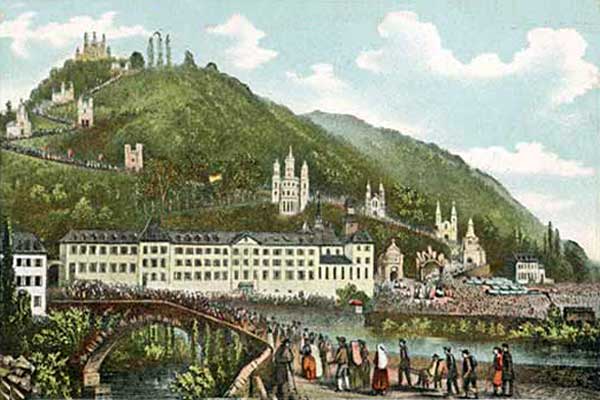
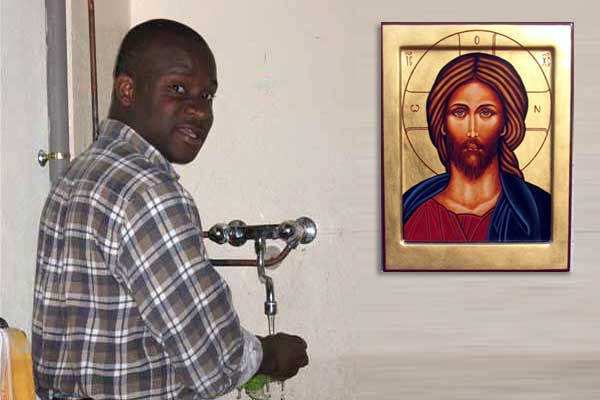
The joy of the Servant
Fr Francis Tohonon Cokou was ordained priest in the Benin on 27th August last. The day before his commitment he made us a present of this testimony.
I bless you, Father, Lord of heaven and of earth, for hiding these things from the learned and the clever and revealing them to mere children. Yes, Father, for that is what it pleased you to do.(Mt 11, 25 - 26)
My soul glorify the Lord, for this great God, this loving Father, has cast his eyes upon me... (DS 135)
What a grace to feel constantly loved, chosen, called by the Lord himself, to become his disciple. I can only thank the Lord with St Michael Garicoits for all the good he has done for me!
For years now I have been progressing with the Congregation to find out what God wants of me. I am delighted with what I have discovered and what I continue to discover. My formation and all the community and pastoral experiences I have had have helped me to abandon myself to providence. (cf. DS 67) This attitude has enabled me to join the school of the Saint of Betharram, to take my place at his feet so as to get to know his charisma and spirituality, to contemplate the divine/human face of Our Lord. When I caught sight of Gods project for me, I also saw the shadows and lights in my own life and the points I should work upon so as to be more available to respond to his call.
It is true that following Christ is not without demands. Yet, it is with faith and trust that I have decided to embark on this route for I am convinced that God loves me and that he is calling me to his universal mission. Therefore I intend to commit myself to this loving adventure of faith and to repeat with conviction: God is everything! Im nothing! (DS 75) All for your pleasure, O my God! All my actions with you! I firmly believe that the Will of God will never lead me where his grace will not be my safeguard.
I have been a deacon since 23rd March 2010, call to be ready. A deacon, servant and responsible for Gods service, in the presence of my brothers, and thanks to the action of the Holy Spirit. For me my ordination has been an invitation to a new departure in the service of Christ, the renewal, not just for one day but for ever, of my here I am!
Soon I shall be renewing my attachment to Jesus Christ Eternal Priest in the footsteps of our father St Michael Garicoits in the Betharramite family. With all the religious of Betharram I want to devote myself to imitating Jesus, humble and obedient, accepting with joy to go where ever the Congregation will send me. I want to be a priest of the Sacred Heart of Jesus of Betharram, servant and witness, servant and disciple of Christ the Eternal High Priest.
Conscious of Gods love and of my responsibility in the service, I am trying to correct my weaknesses so as to respond better to the call of God and of mankind. And so procure for others the happiness which I myself feel. This happens first of all through the love of God in community life in Dabakala, for it is there that unity in perfection is realised. Through him and with him we are able to respond to the different community and pastoral challenges: to consecrate ones self totally to evangelisation; work for promotion of the individual in so far as we are able; share the mission entrusted to Betharram in the Church. And that, everywhere in the whole world where Christ needs to be known and loved, where ever the poor are not treated as men, and children of God.
I am very much aware of the mission in the social environment, especially in the service of the most destitute, the street children, the Aids orphans, the malnourished. The priesthood which I am about to receive, I can see as a communion where nobody lives for himself, but for others before God. In this Year of the Priest I am being invited to change my life into a diaconate. With the Cure of Ars I understand that the root and aim of service is love: the priesthood is the love of the heart of Jesus.
François Tohonon Cokou,SCJ
Bangalore or Mangalore ? Strangers have to repeat these two names over and over again so as not to get them mixed up! Long enough to conjure up an image or to recall a memory! Bangalore, yes! Bangalore, situated inland, great technology centre, renowned world wide for its precious IT workforce. Mangalore? Of course, the lovely house belonging to the Apostolic Carmelite Sisters with its garden by the Indian Ocean. But for us Betharramites the two houses are simply the hostels where 32 young men, aged between 18 and 30 years, are progressing slowly in the footsteps of Jesus under the guidance of a young Basque that they are getting to know. Betharramite spirituality transplanted to India has well and truly taken root thanks to the silent work of the religious who look after the youngsters from far and near and thanks to the many benefactors who through their generosity, make it possible for us to assure a human and intellectual formation worthy of the name. Incidentally, lets greet our Betharram friends in England! At a time when the Vicariate of India is preparing its mission field ad gentes, formation is still its primary concern. In the course of such a huge programme the young learn, together with their elders, to face the problems of everyday life. Before the Summer there was a problem about replacing the jeep of Maria Kripa (Mangalore) at the cost of 10 000, the jeep in question had packed it in after more than 200 000 km. At the same time in Bangalore they were trying to solve the problem of transporting the novices to the inter-novitiate sessions by acquiring a transporter at the cost of about 10 000. Low and behold the well in Bangalore ran out. This was an awful blow. It will mean making use of the towns facilities and this will be expensive. Unless it were possible to open another source? That would require 250 000 rupees (that is about 4 000). The daily life in the mission consists in managing the unforeseen and the worries of any household. It is to be hoped that a little helping hand will enable our two communities to cope with the most pressing need! |
For your donations: 
Sacred Heart Mission Centre, St Josephs Murcott Road,
Whitnash, leamington Spa. CV31 2JJ.
> Indicate: Solidarity Project India 2010 <
1st Chapter of the Fr Etchecopar Region
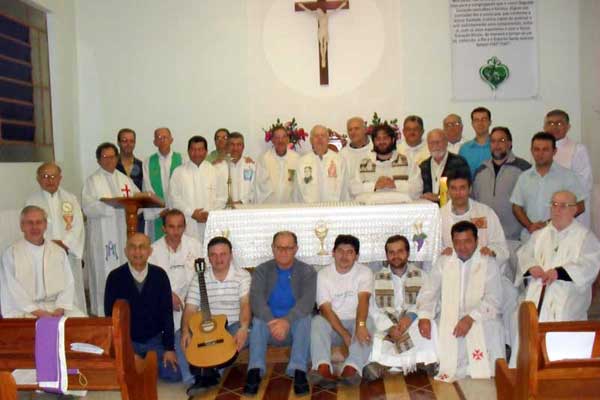
An experience of the Holy Spirit
From the 27th to the 30th September the first Chapter of the Etchecopar Region took place. Assembled for three days of intense work and reflexion the 30 participants (29 delegates and one guest, Fr Bruno Ierullo, General Councillor), tackled the following topics: An examination of the situation in the Region and the communities; the evolution of the application of the resolutions of the preceding Chapters; a study of the themes for the General Chapter, proposed by the Superior General; formulation of the concrete propositions for the General Chapter of 2011; election of the delegates from the Region to this Chapter.
To help the reflexion, the Regional Superior recalled the importance of the document Aparecida and added texts from the Bishops Conferences of the four countries concerned. He also chose several messages from the Superior General, drawn principally from Family News.
The stakes were evident: according to the recommendations of Father Agin we were to be docile to the inspirations of the Holy Spirit, at the same time not losing sight of the inventive fidelity to which we are all called as Betharramites of South America.
Here is an assessment of the meeting by the delegate from Paraguay:
Without exaggeration, it can be said that this first Chapter of Fr August Etchecopar Region has been a grace filled time for all concerned.
The favourable geographical situation of Passa Quatro provided the ideal place for the event which lent dynamism to our Congregation.
The fraternal welcome of Fr Jair and his community set the tone for the great events which we experienced in the south of the Minas Gerais State.
Right from the start it was evident that the Holy Spirit was facilitating and accompanying our group. The quality of the work undertaken, the joy of tacking the different topics, as important as they were standard, concerning us, the depth, the seriousness and the enthusiasm shown in tackling them, were so many signs of Gods presence in our midst.
I am not forgetting to point out the human and religious qualities of Fr Gustavo, our Regional Superior; with tact and discernment he opened up the way to dialogue and the areas of communion.
From my point of view, this Regional Chapter has been a real springtime for a fruitful presence by us in South America. I believe that what Cardinal Danielou (Theologian at Vatican II) wished for the new times of the Church was realised with us: A return to sources, and contact and dialogue with contemporary cultural thought.
Carlos Escurra,SCJ
Beatification of Cardinal John Henry Newman
An unforgettable event
On Sunday 19th of September 2010, Pope Benedict XVI declared Venerable John Henry Newman Blessed. Pope Benedicts state visit to United Kingdom had very mixed feelings earlier. Catholics in Britain feared that the people would boycott the Popes state visit over claims of Vatican cover up in the wake of the worldwide child abuse scandal. Around 55,000 people were gathered in Cofton Park in Birmingham where Cardinal Newman was once enjoyed the serenity natural beauty. His burial place Rednal is not very far away from Cofton Park.
Cardinal Newman was one of the greatest religious figures of the last 200 years of British history. His conversion from Anglicanism to Catholicism at the age of 44 made a great influence in shaping the history of English Catholicism. His writings were influential and inspirational. Contemporary Catholics still like to sing the Hymns like Lead kindly Light..., Praise to the Holiest in the Heights that he wrote during his life time. Newman died in 1890 and after his death people started to call him as a Saint.
Pope Benedicts intention to make Newman Blessed on the final day of state visit was a very special occasion for many Catholics as well as non Catholics of this country. On this colorful occasion, I had been fortunate to be part of the beatification ceremony. The experience of serving the Pope in the altar as a Deacon brought me joy and inner happiness. This joyous occasion is one of the unforgettable events in many people lives just as mine. It was like a dream comes true. It was an amazing event in my life and I could experience his prayerfulness and it is so engaging. I could have spent more time with him. It was second time I saw the Pope and this is called fabulous one. I have been catholic all my life and to actually be in the presence of the successor of Peter and serve him in the Altar was the proudest moment of my life. After this joyous occasion of Beatification ceremony He was so happy and He thanked all of the altar servers and master of ceremonies for the kind assistance that he had during this ceremony.
I think people will have a misconception about Pope Benedict starting from all kinds of misapprehension about his service before he was elected as Pope. But having met with him and serving him I felt he was so gentle and his approach so engaging. Whoever extended their hands towards for shake his hand from the Pope had received his gentle touch. I think peoples false impression may change during the course of time. He has been inspiration to many during this state visit and I pray that he may continue to be on inspiration for many people in the days to come, that is my humble prayer to the Lord.
Wilfried Perepadan,SCJ
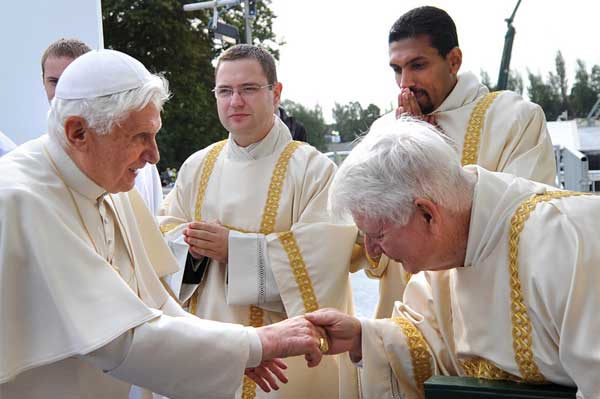
5 minutes with... the Miracoli Prayer Group
Every Tuesday in the Church of Santa Maria dei Miracoli in Rome, Francesca, Claudio, Daniele, and their friends meet for a time of prayer together. We put a few questions to them. Nef: How did your group come into being? What are the outstanding points of your structure? Now that you are neighbours with the Betharramites, what do you appreciate in them? Besides prayer meetings, what other projects have you?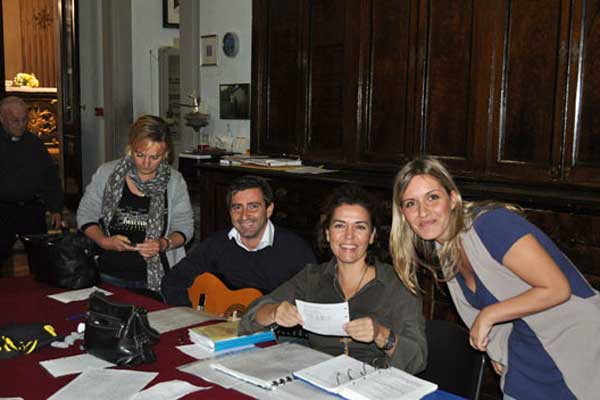
- It all began with a meeting we had with a priest from Isneria (Southern Italy), Fr Roberto Basilico. In the Summer of 2004, after taking part in an evangelisation camp with the Amandier Community, we wanted to pray together every week. To begin with we were just a handful: Claudio, Francesca, Giorgia, Diletta, Angela and Lea. We went to see our Parish Priest on the outskirts of Rome, Mgr Adriano Furgoni, to ask his permission. He gave us the Chapel of St Ignatius of Loyola at La Storta for Tuesday evenings. As time went by more people joined our group; when we reached 50 the Chapel had become too small for us. We found we had more breathing space, this time in the Cathedral of the Sacred Hearts of Jesus and Mary in La Storta. When in November 2009 the cathedral ceiling came crashing down we met Fr Mario Giussani who welcomed us, with his community, in the Church at the Piazza del Popolo.
- The Company of the Friends of Jesus, Joseph and Mary is part of the spiritual group of the Catholic Charismatic Movement; It is part of the Church, Body of Christ and totally obedient to the Magesterium. It lives with the power of the Holy Spirit and has its heart turned towards the motherly image of the Virgin Mary. Star of the New Evangelisation it sees in prayer the source of its communion and the energy for evangelisation.
Thanks to this experience we have understood how important Sacramental life is. We are constantly discovering the value of Baptism, by which we have been admitted into Gods family. We participate in the celebration of Mass, source and summit of our Christian Life and which helps us to shoulder the responsibilities linked to the sacrament of Confirmation. Through the sacrament of Reconciliation we receive the Holy Spirit in our heart like a burning bush. There is that deep feeling of joy at feeling we have been forgiven and can become instruments of forgiveness. Furthermore, by transmitting Gods love through the Sacrament of Marriage, our family becomes a little church, in the image and likeness of the Holy Family. That is something which has matured and grown thanks to the constant experience of the prayer of praise, a community prayer at the heart of the Church, presided over by priests and shared with the laity. Consequently, the prayer of praise is a powerful renewal of our Christian life and invites us to a constant conversion of the heart; it is the fire which feeds our desire to de born again every day from the Word.
- As Pope John-Paul II said in his apostolic letter Tertio Millennio ineunte the mission of evangelisation to which all the faithful laity is called urged us to live this experience, expressing our faith and our charisma at the heart of the Church. We are grateful to the Lord of History who granted us the grace of getting to know Fr Mario Giussani; by opening the doors of the doors of the St Mary of Miracles, he welcomed us with great tact, respect and fatherly hospitality. With the passage of time we have found these same qualities in all the Fathers of Betharram. What we appreciate most is the way they trust us to accompany, with them, each according to his charisma and ministry, other brothers and sisters in the Faith.
All the priests in the Betharram community have played their part in the services rendered to our prayer group: Fr Enrico Frigerio for confessions and his exhortations to the faithful to receive the sacraments. Fr Angelo Riva for his precious councils; the Father General, Fr Gaspar Fernandez, for his moral and spiritual support and for the way he keeps a watchful eye on individuals and on group dynamics; Fr Mario, chaplain to our community, who takes great care of our children and accompanies them in their formation on the Word of God and also because he is present at our weekly prayer meetings on Tuesdays and at our days of recollection.
- In the course of our meetings there is a project beginning to emerge little by little, there is constant and prayer, of course, and as a tangible sign of charitable acts, we want to found the St Joseph Hostel. It would be a kind of shelter for youngsters who have no family or who have broken with their family. This project is the brain child of the family responsible for our prayer group. They intend to be totally committed to this project while at the same time depending on the collaboration of other members of the group. Already these volunteers are engaged in the preparation and foundation of the hostel.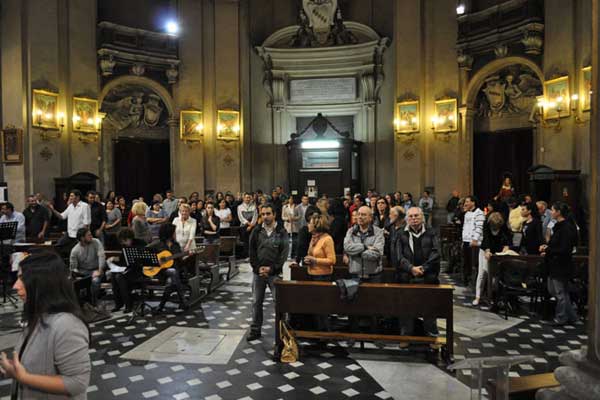
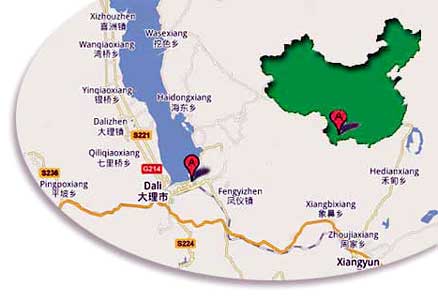 |
9. THE COMMUNISM AND THE MISSION IN TALI (december 1950-december 1951)by |
At Tali. Events might have gone unnoticed were it not for the all powerful intervention of the police, who quickly found out that among our Christians were two individuals liable to the courts and prison. The deal was quickly concluded: Attack these foreign imperialists and we shall leave you in peace.
The zeal of these new converts to patriotism had little success; the Christians backed up the Bishop and followed the instructions of his catechist who was really attached to us. So far there have been few martyrs in China; there are going to be many now and Im going to be one of them so he said to one of our young missionaries.
Thanks to this period of calm we were able to have a good celebration of all the great liturgical feasts: Easter and the Assumption had a pontifical celebration in the midst of a huge and enthusiastic crowd of Christians. It was eventide.
Arrival of the government emissary. Things were not going according to the wishes of the government. At the beginning of September a government emissary arrived in Tali, well trained in communist methods of disinformation. He carried out two thorough investigations in the twp residences. The only incriminating item found was a school book at the bottom of a packing case belonging to a pupil absent for the past two years. Despite his objections, Mgr Lacoste had to accept responsibility, for as he was told if an atom bomb had been hidden at the bottom o0f that packing case, would he not be responsible?
Mgr was forbidden to celebrate Sunday Mass for our Catholics unless he had done what the law required. Every Friday he was obliged personally to give the police a list of all the Catholics who would assist at Sunday Mass, together with their age, situation and address. The list was submitted on the Friday and permission sought on the Saturday by Mgr in person. On the Sunday, if there was one person too many or too few present, there could be no Mass. What were they to do? After discussing the matter with the Catholics and having encouraged them to be faithful to their religious duties, Mgr decided to accept the present situation; it would be better to assure the Catholics with the essential of the cult to the end. Such an awful arrangement had the desired effect of attacking regularity at the celebrations; however it was necessary to omit Mass once or twice because of people mission.
Freedom of movement was restricted to its simplest expression; henceforth the Fathers were forbidden to move around in town except in the street joining the Fathers dwelling place to that of the Sisters; Mgr was also forbidden to speak to other Catholics without police permission.
At Pinkio the Chapel was invaded by scoundrels who flung the cross to the ground. At Pao-Shan there was a street demo of progressive Catholics; four or five leaders forced the other Catholics to march but they could understand nothing about what was happening!
Document Actions






